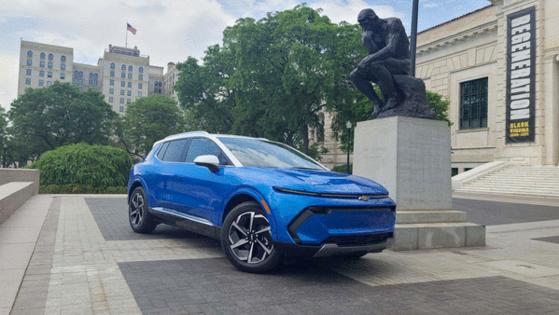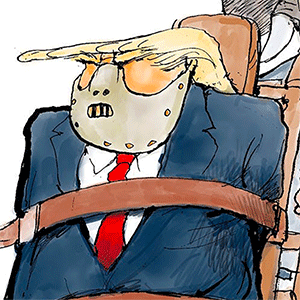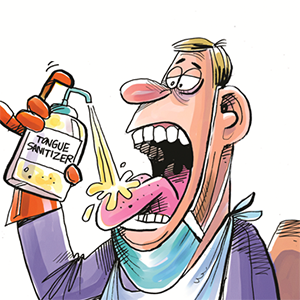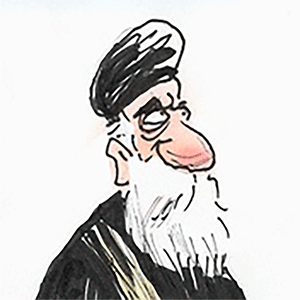How tariffs could upend EV adoption in America
Published in Automotive News
Tariffs on imported vehicles and auto parts coming into the United States could be just the latest bump in the road amid slow electrified vehicle adoption.
Many electric vehicles, especially lower-cost ones, are imported for sale in the United States. The 25% tariffs that President Donald Trump has placed on them are expected to increase the cost of vehicles and likely increase their prices. Increased costs, less demand for new vehicles because of higher prices and potential capital expenditure investments to increase production in the United States could hurt automotive profit margins, limit cash flow and leave less room for funding research and development to compete globally.
"If they are having to spend more money to either pay for tariffs or move production to the U.S., that's significant capex for most of the companies," said Sam Abuelsamid, vice president of market research at communications firm Telemetry. "That's funding not going to R&D, which means they're not going to be able to innovate and not bring new technologies to market. That will make them less competitive in the global marketplace at a time they're already getting shut out of China."
Affordability already is a top issue for buyers considering an EV. The average transaction price of a new EV is more than $55,000, according to dealer digital services provider Cox Automotive Inc. This obstacle comes alongside range anxiety, concerns over access to charging infrastructure and charging speeds, electrical grid instability and a dynamic political conversation around EVs. Trump also has ordered his administration to reconsider incentives for them, including an up-to-$7,500 subsidy on plug-in vehicles for consumers.
Add a 25% tariff on some models, since foreign production is one way automakers have sought to lower the cost of EVs. Analysts have suggested the duty could increase prices by $4,000 to $20,000 per vehicle. Trump is citing national security concerns for the Section 232 tariffs grounded in the Trade Expansion Act, saying the United States needs a robust manufacturing base and supply chain. He insists the tariffs will increase U.S. production, create well-paying manufacturing jobs and boost revenues to lower taxes and pay off the country's debt.
General Motors Co., which sells the second-most electric vehicles in the United States behind Tesla Inc., saw EV sales nearly double year-over-year in the first three months of 2025. However, it imports the Chevrolet Equinox EV, which starts at $33,600, along with the Blazer EV and Cadillac Optiq, from Mexico.
"We’re building on our engineering efforts to match the ideal battery to each vehicle — optimizing performance, cost, and range to meet the unique needs of our customers," Kurt Kelty, the Detroit automaker's vice president of battery, propulsion and sustainability, said at the SAFE Summit earlier this month in Washington.
“By advancing battery technologies and driving innovation, strengthening our onshoring and making our supply chain the most competitive in the world," he added, "we’re building not just better batteries, but a stronger and more resilient U.S. industry for the future.”
Ford Motor Co.'s Mustang Mach-E also originates in Mexico, and it imports the hybrid Lincoln Nautilus from China. A representative for the Dearborn, Michigan, automaker declined to comment on what tariffs mean for its EV strategy.
All of Stellantis NV's EVs are built outside of the United States: the Jeep Wagoneer S and electric Ram ProMaster commercial van come from Mexico, and the electric Dodge Charger Daytona comes from Windsor. Stellantis also imports the plug-in hybrid versions of the Chrysler Pacifica minivan from Windsor, and the Dodge Hornet and Alfa Romeo Tonale come from Italy.
The transatlantic automaker on Monday began idling the Wagoneer S plant in Toluca that also produces the Jeep Compass and Windsor Assembly Plant because of the tariffs. Windsor will be down for two weeks, and Toluca for a month. Production shutdowns will limit EV availability.
"In 2024, Stellantis began transitioning to its next generation of products that are designed to give customers the freedom of choice," spokesperson Jodi Tinson said in a statement. "Our new STLA multi-energy platforms, as well as our existing platforms, are engineered to offer a variety of powertrain options, including internal combustion, hybrid and electric. This strategy remains as we assess the effects of the recently announced U.S. tariffs."
And all EVs have some parts that come from another country. The 25% tariffs on auto parts are expected to begin May 3. There is an exemption for parts compliant with the United States-Mexico-Canada trade agreement that Trump signed in 2020 until the value of non-U.S. content can be evaluated.
"Right now is one of the best times we’ve ever seen to make the switch to an EV," said Elaine Borseth, president of the education nonprofit Electric Vehicle Association. "The federal incentives for new and used electric vehicles remain in place. With tariffs on the horizon and tax credits at risk, that window is closing."
Gauging response
A Gallup poll released Tuesday showed the number of Americans open to buying an EV dropped to 51% in early 2025, down from 59% in 2023.
Gesika Cline, 39, of Columbus, Ohio, has wanted an electric vehicle, seeing it as a good thing to do for the future of the planet and her children, and after driving EVs and experiencing "the go" they have. She decided to look more seriously in early March after her 2009 Honda minivan was totaled by an uninsured driver. She opted to lease a 2024 Ford Mustang Mach-E, which is built in Mexico, since 2025 models were still pending delivery to the dealership.
"Every day I wake up wondering about tariffs and what is going to happen," said Cline, adding about the president: "He was signing executive orders every day. What if the incentives get pulled and the prices go up? This way, I knew I got the car I wanted."
Ford, she added, made it easier to adopt an EV by offering to cover the cost and standard installation of a Level 2 home charger under its Ford Power Promise commitment, which has been extended through June 30 and was expanded last week to the United Kingdom.
In the San Francisco Bay Area, most sales at several of California Automotive Retailing Group's 18 showrooms are EVs. The Japanese and Korean brands have seen increased foot traffic and leads, said Inder Dosanjh, the group's CEO.
"They think there's not a tariff on GM and Ford," he said. "Everybody is trying to figure it out. Every EV we have, we are selling those cars right now."
He added: "We made more money when we had less inventory during COVID. Dealers will figure it out."
Automakers haven't announced major price increases, so far. Ford and Stellantis actually said in the days following the institution of the 25% tariffs that they were taking advantage of the uncertainty created by the tariffs and providing clarity to consumers: Both companies are offering thousands of dollars in savings through discounts typically reserved for their employees.
But "they're going to pass along most, if not all, of the cost" of tariffs, Abuelsamid said about the industry. "The reality is they don’t have the profit margins to be able to absorb a 25% tariff."
In statements, the United Auto Workers has suggested otherwise, citing automakers putting millions of dollars toward compensation packages for top executives, stock dividends and share buybacks. It's conditionally affirmed support for Trump’s automotive tariffs and previously criticized the Biden administration for not ensuring the transition to EVs is a "just" one for its members.
“We also want to make sure, as we reshore goods and manufacturing, that these are good jobs. These have to be good union jobs,” Jason Wade, a top adviser to UAW President Shawn Fain, said last week in a call with reporters.
He added that if unions are “kneecapped” by a Trump administration that has so far been hostile to organized labor, “it will not have a positive result that I think the administration thinks it will have.”
Automakers need certainty to make decisions to increase production in the United States, added Tony Totty, president of UAW Local 14 that represents workers at GM's propulsion systems plant in Toledo, Ohio. The automaker removed a transmission line from the site to invest $760 million so it can build electric drive units for EVs, but that line now sits idle as Mexico ships EDUs into the United States.
"The company's understanding of the market was different when there was $3 billion allocated to charging stations, and the administration took that away," Totty said. "That would cause any company pause and to evaluate where this is going. General Motors still is committed to EVs, but there's so much uncertainty in the market, they're not rushing to take advantage of the investments they’ve already made."
GM last week also said it was temporarily laying off about 200 workers at its EV Factory Zero Detroit-Hamtramck Assembly Center, though the company cited market dynamics for the decision and said it wasn't because of tariffs.
US battery content
There could be some silver lining for EVs with tariffs — the biggest cost for them is their batteries. Helped by manufacturing subsidies for EV batteries in the Inflation Reduction Act that former President Joe Biden signed in 2022, billions of dollars of investment for battery production has gone into the United States.
Eventually, Trump's auto tariffs are expected to exclude only the value of content made in the United States. That means even vehicles built in other countries like Mexico but use U.S.-made batteries could see significant relief once the processes are in place to evaluate those origins. The Trump administration hasn't said when that will be.
"EV sales are going to continue to climb in the coming years," Abuelsamid said. "Apart from Tesla, most other EVs did go up in sales. There's still an opportunity there for EVs."
GM has joint-venture EV battery plants with LG Energy Solution in Ohio and Tennessee and is planning a third with Samsung SDI in Indiana. It's selling its share in a joint-venture battery plant in Lansing and Delta Township to LGES.
Ford is expected to launch battery production in Kentucky this year, though launches at other battery plants in Kentucky and Tennessee have been delayed. It's building another battery plant with a different kind of chemistry in south central Michigan's Marshall slated to launch in 2026.
Stellantis has a battery plant in Windsor with LGES and has two planned for Kokomo, Indiana, with Samsung SDI.
Leaders in the automotive industry have expressed fears that Trump could seek to eliminate the EV battery production subsidies. Ford CEO Jim Farley in January said converted plants depend on the production credit, and that without it, the company would have invested elsewhere.
Battery cells are each eligible for a credit of $35-per kilowatt-hour of energy they can store under the IRA. Storage ranges from 60 kilowatt hours in smaller EVs like the Chevrolet Bolt EV to more than 200 kWh in the GMC Hummer EV, according to auto information website Edmunds.com Inc. Critical mineral miners, processors, purifiers and recyclers can claim a credit equal to 10% of their production costs, too.
Chinese competition
The legislation was passed to promote EVs and create a more level playing field with China, where, for years, the EV industry has been subsidized. Home to the world's largest automotive market of which about half is all-electric and plug-in hybrid, China is now the leader in EVs. Its BYD Co. Ltd. sells more EVs than any other automaker in the world.
U.S. automakers have lost share in China, and Chinese companies are growing their share in markets like South America, Mexico and Europe. Analysts predict they'll be increasingly selling and even manufacturing vehicles in the United States in the coming years.
If tariffs hurt U.S. automakers' global competitiveness, they'll be isolated to the domestic market, and perhaps even find themselves at risk here.
"The U.S. manufacturers won't have enough scale to be competitive," Abuelsamid said, should their sales decline around the world. "They’ll end up losing."
©2025 www.detroitnews.com. Visit at detroitnews.com. Distributed by Tribune Content Agency, LLC.








Comments